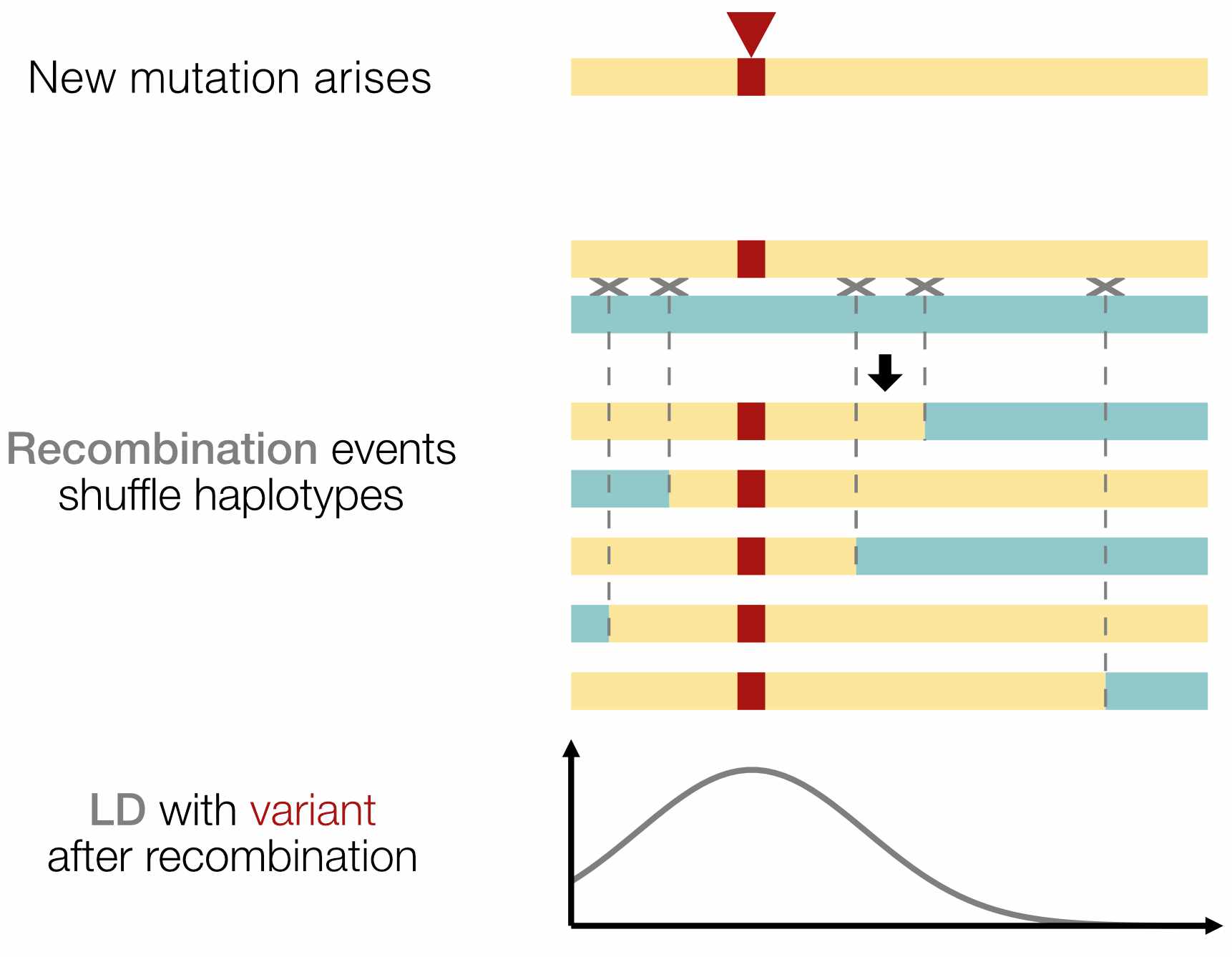4.1 What is linkage disequilibrium?
Linkage disequlibrium (LD) refers to correlation among genotypes at multiple sites in the genome. This is a consequence of the fact that chromosomes are transmitted in “chunks” through the generations.
When mutations arise, they arise on a single chromosome with a given set of alleles. The new mutation will continue to be associated with this genetic background until it is shuffled during the process of meiotic recombination. Together, a set of alleles that tend to occur together because of linkage disequilibrium is called a haplotype.

Fig. 1. After a new mutation arises, recombination over the course of many generations reduces the number of variants in LD with it.